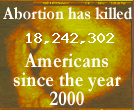Konig’s Fire
by Marc Schooley
They Called Me Nebuchadnezzar
The Nazis have established a torture center in a mine at the heart of a Romanian forest. Here they interrogate prisoners and, sometimes, throw them into the furnace at the heart of the mine.
Only now, the primeval forest is rising against them, unleashing a preternatural army to besiege the great iron gate of the mine. The fearsome guards become terrified prisoners and the furnace itself burns with hungry anger against them.
Sascha König, a man they called Nebuchadnezzar, is their only hope. He is master of the furnace. All along, he has been Hitler’s ardent servant. But now...König is wrestling with demons of his own, and the Master of all fires is calling him to Himself through the haunting eyes of a little gypsy girl König did not save.
Philosophical depth and Transcendent hope
Marc Schooley is one of those authors who reminds me of King Solomon, as he projects an ability and writer’s sense that transcends much of the rest of what is offered in the novelist world. He makes one think that perhaps the world itself misses out on truly great talent when it ignores something in the vein of this book, which is wholly Christian themed.
A rich, descriptive narrative that reveals a complex and talented imagination, Konig’s Fire can be a tough read. The reader may have a problem getting around reading a novel about Nazis also, and in the first half or so of the book, Mr. Schooley takes some rather long and intensive paragraphs to describe the surrounding environment and situational complexities of the characters involved. This happens to such an extent that it leads one to believe that perhaps there are dozens and dozens of conceptual drawings somewhere that helped the author to literally inject himself into the subject at hand, in an uncomfortably realistic way. I couldn’t help but wonder why there weren’t a few illustrations within the book, as I would have loved to see some of this creation, but I suppose that the author prefers to keep the incredible narrative descriptions within the readers imagination.
There are fanciful and fantastic images and also “antagonists” in the vein of venue from the best of “Johnny Quest” style imaginings. The plant men, giant gorilla like creatures and glowing orbs that float through the air, will bring an impression of the “childlike fantastic” to bear. The action sequences, with machine gun battles against giant sentient vines and scrappy giant roaches, are also in the best vein of “guy movie” literation, without ignoring the more human aspects of what is really, on its surface, a rather ridiculous situation that leads to important revelations that can impact the reader in a personal way.
However, the themes covered in the narrative are both deeply considered and realistically rendered. It is perhaps the desire of the author to write a book on these deeper themes of mankind without creating a dusty tome for the college library philosophy and religion department. And indeed his delivery of this desire is championed in an unabashed and principled way. Though the book may entertain with action and fanciful creatures from the surrounding forest, the deeper aspects of the narrative’s purpose are never sublimated for the benefit of mere energetic entertainment.
The second half of the book begins to loosen up a bit with the description of the surrounding forest, the mine and the characters within the claustrophobic prison of their unintended captivity, and begins to move at a pace that keeps one turning pages. Mr. Schooley has a talent for this, as I have seen in another of his books, therefore, if one can “trudge through” the thicket of his narrative in the first half, you’ll be rewarded with the spry and quickened pace of the second half.
This is, of course a Christian themed novel, and therefore promotes those concepts and ideas of Christianity established by the Bible. The only difficult thing that you may have a problem with is reading the book in a public place. The chapters are emblemed with the iron cross of Germany circa World War II. The cover also has the “fittingly” Nazi look in keeping with the subject matter. If reading on the bus or in the library, you may not get the chance to explain to passers by that the story is about redemption and the role of evil in the everyday mind of mankind, and not some type of “union manifesto”. But, of course, this is a personal thing for each reader to decide for himself. Regardless, I recommend this novel for any one who can handle a mix of the fantastic and the transcendent that deals with God, Mankind and the results of evil.
 Marc Schooley is a Texan, which may be empirically verified if you ever hear him speak. He is a Christian philosopher, theologian, Bible teacher, speaker, musician, and nascent Christian fiction writer.
Marc Schooley is a Texan, which may be empirically verified if you ever hear him speak. He is a Christian philosopher, theologian, Bible teacher, speaker, musician, and nascent Christian fiction writer. 







No comments:
Post a Comment